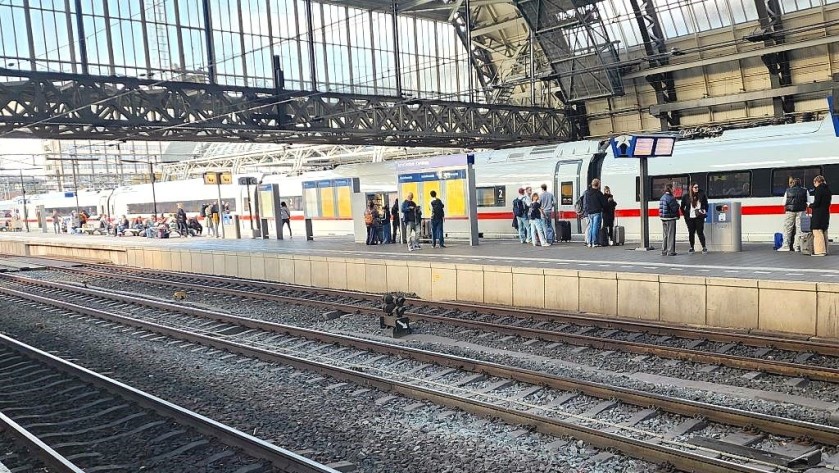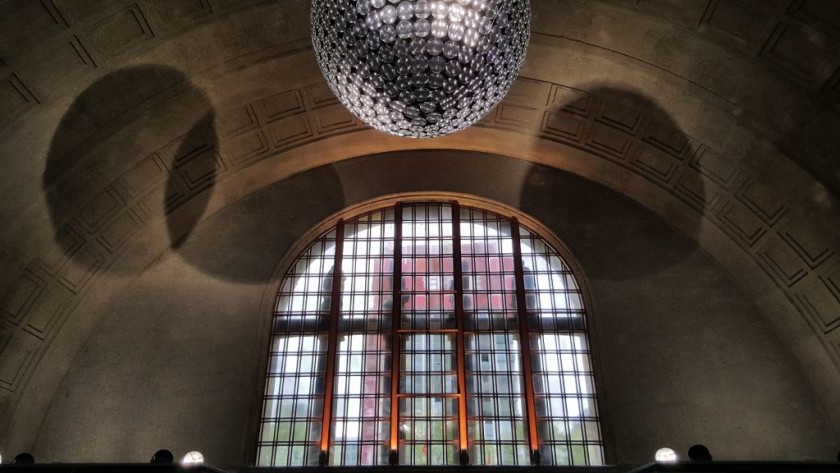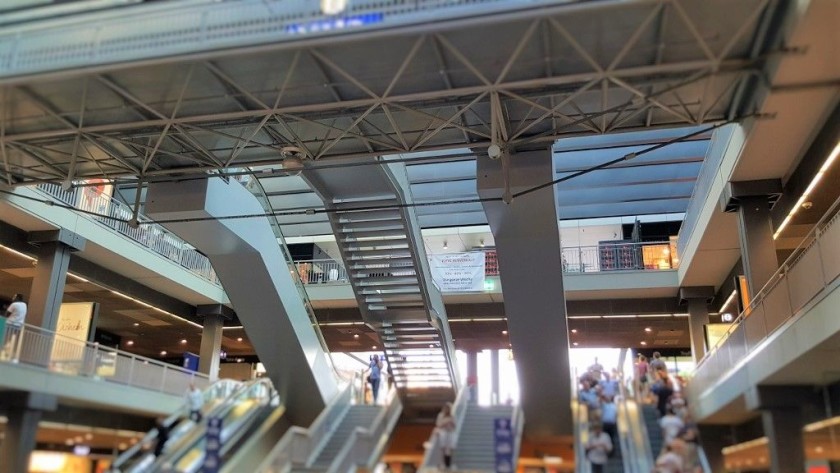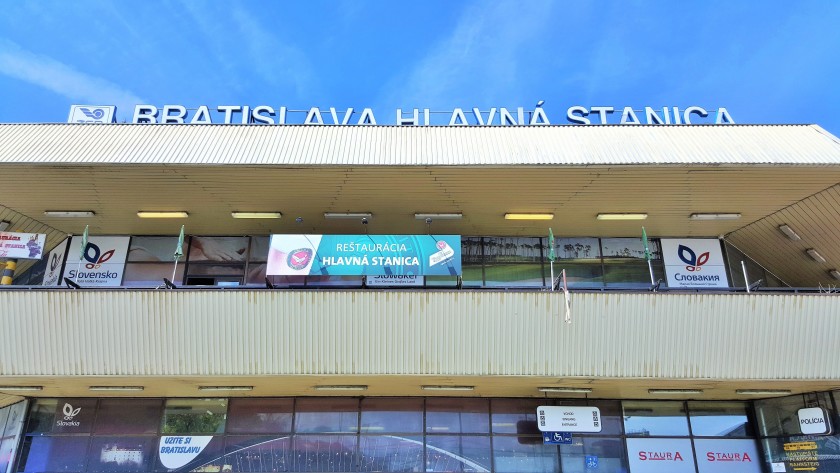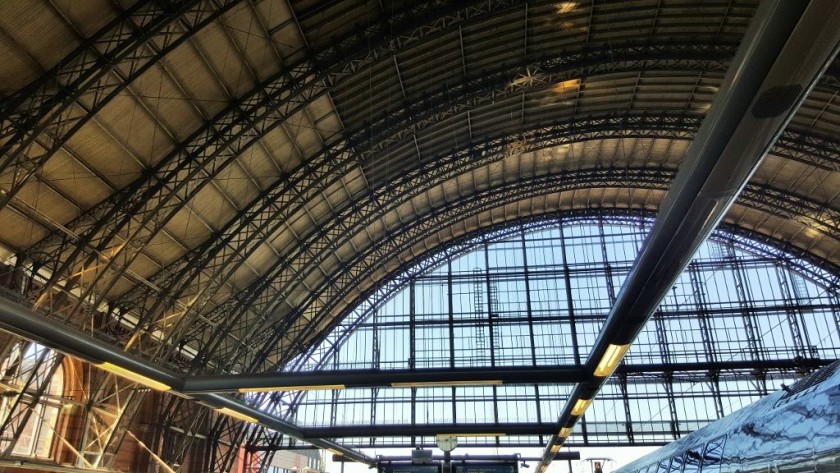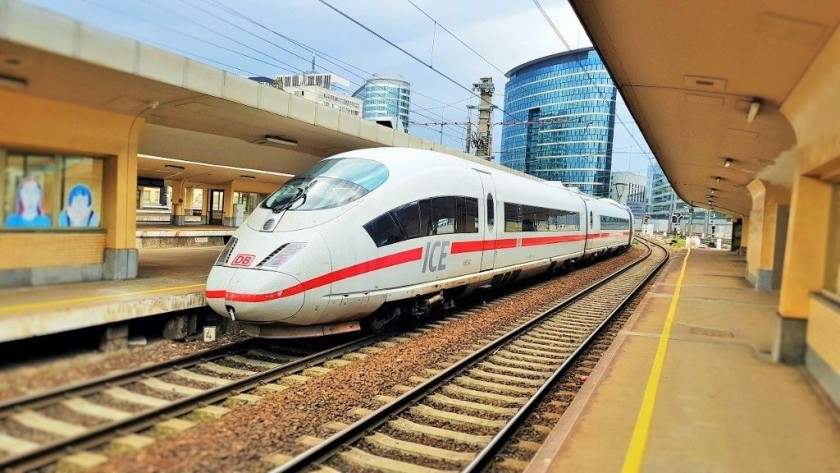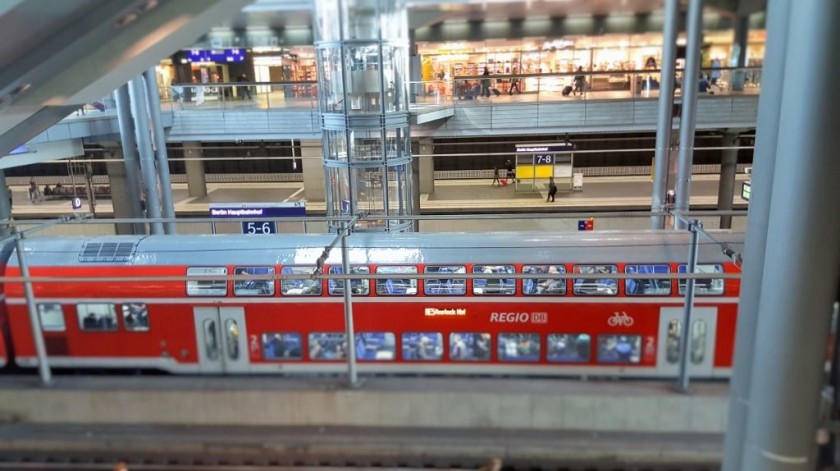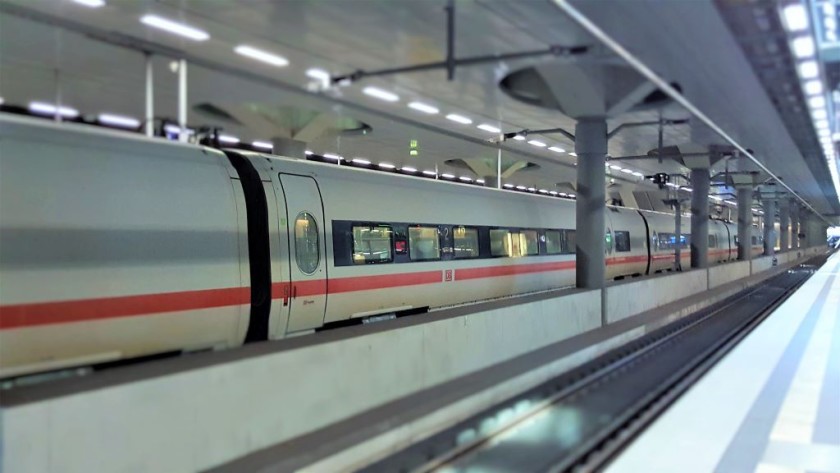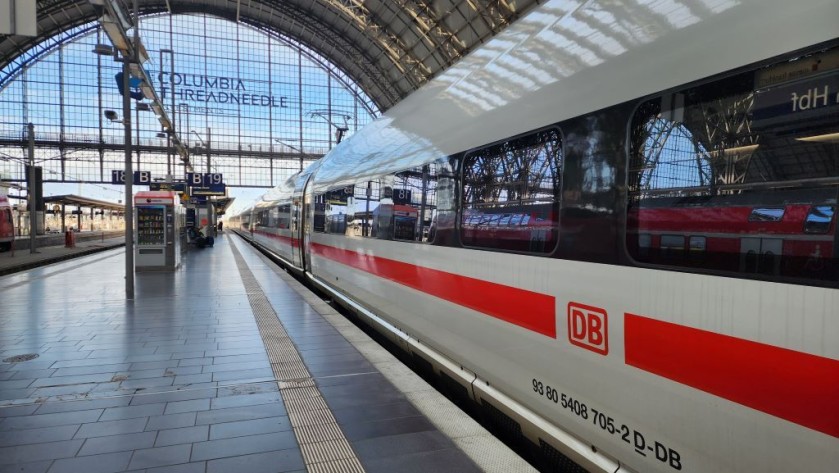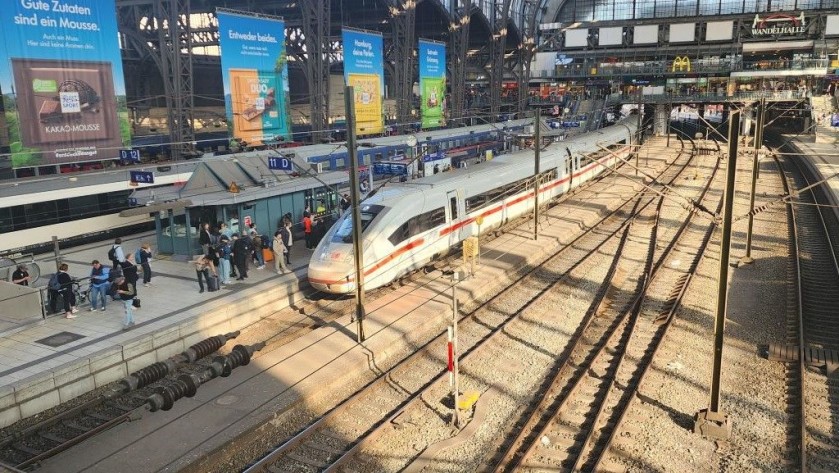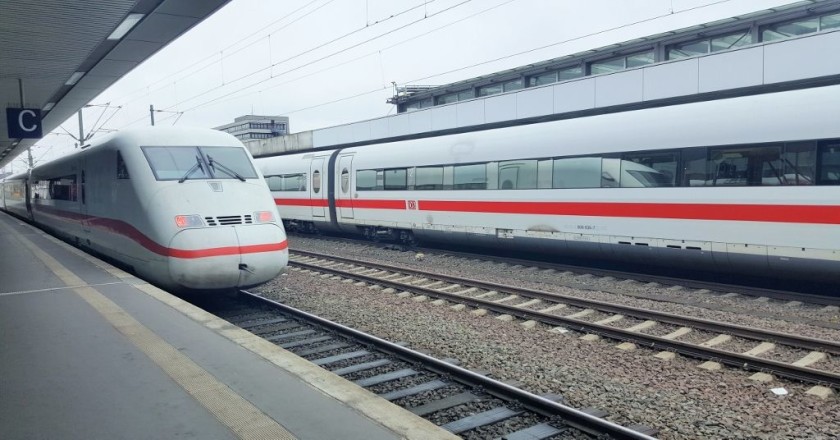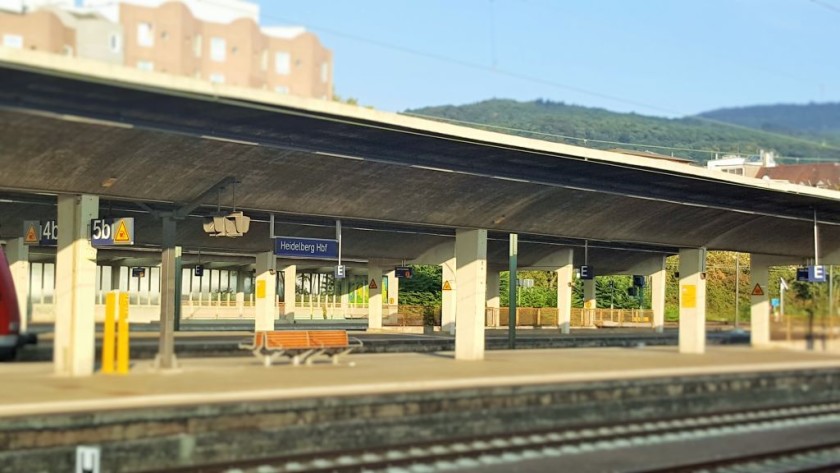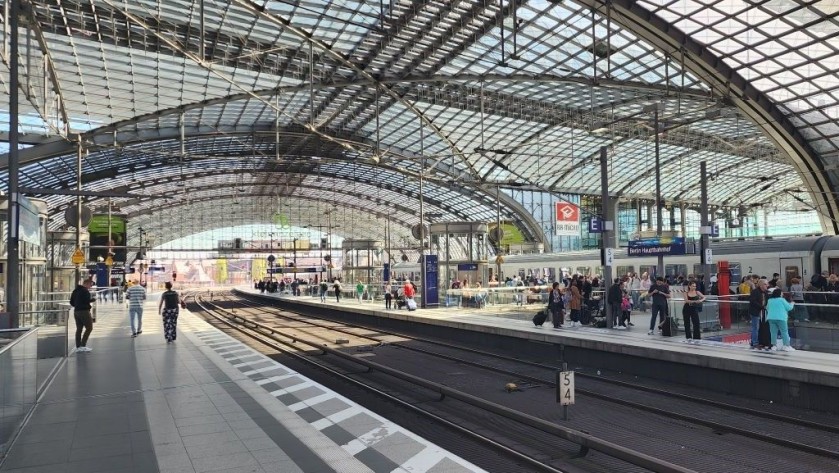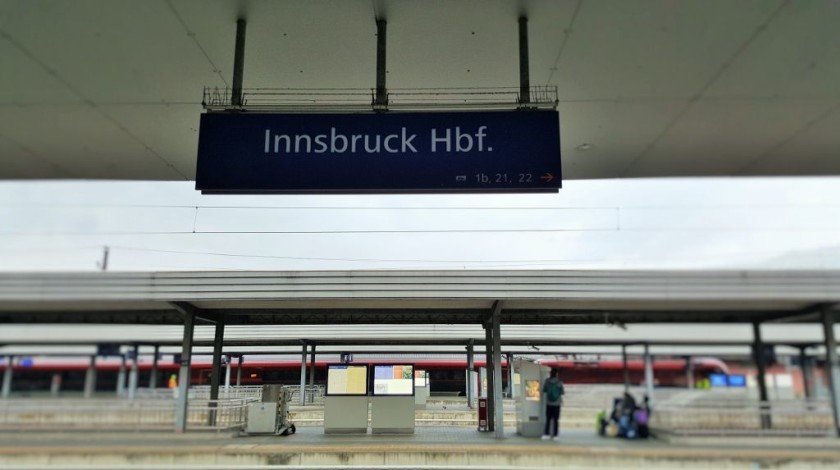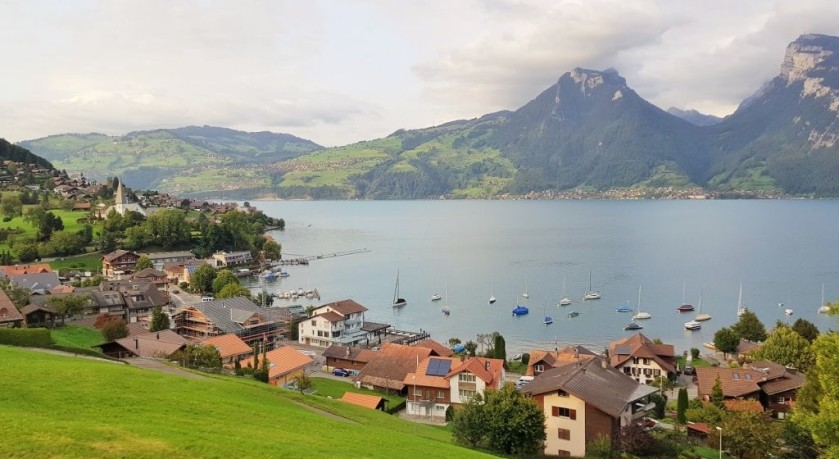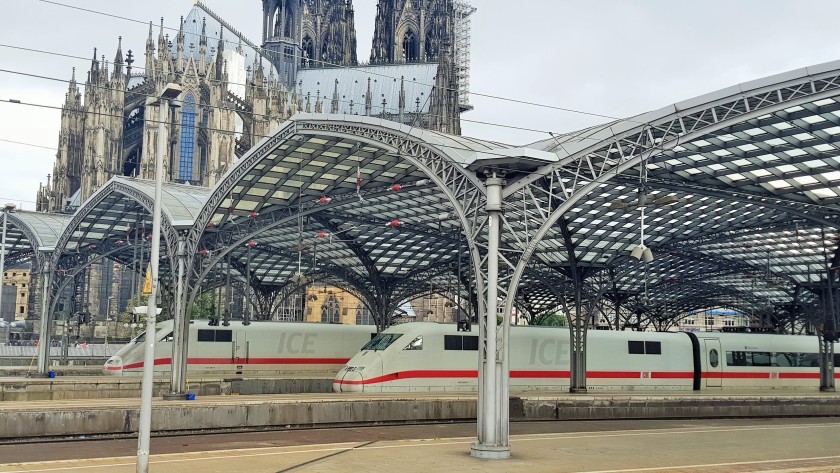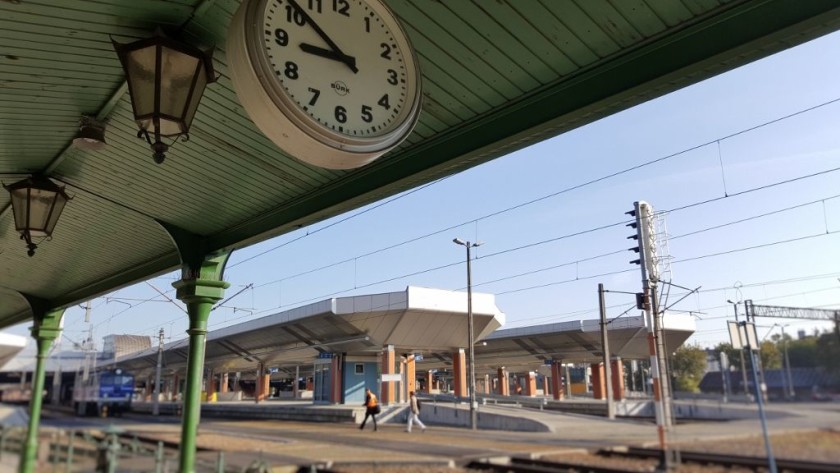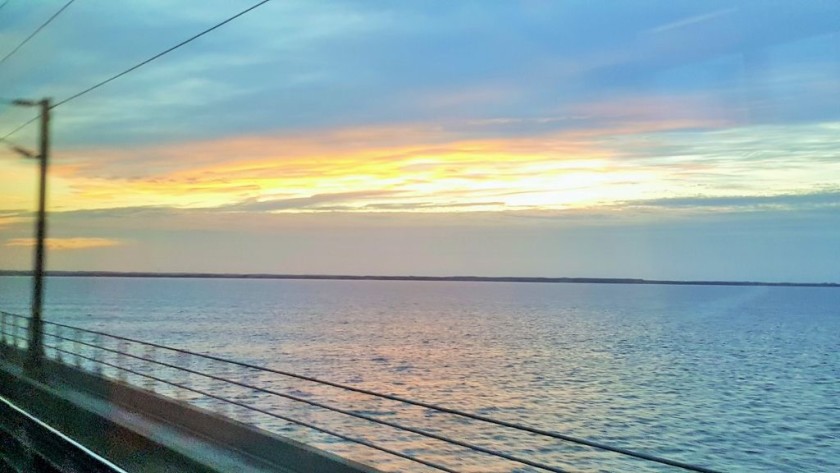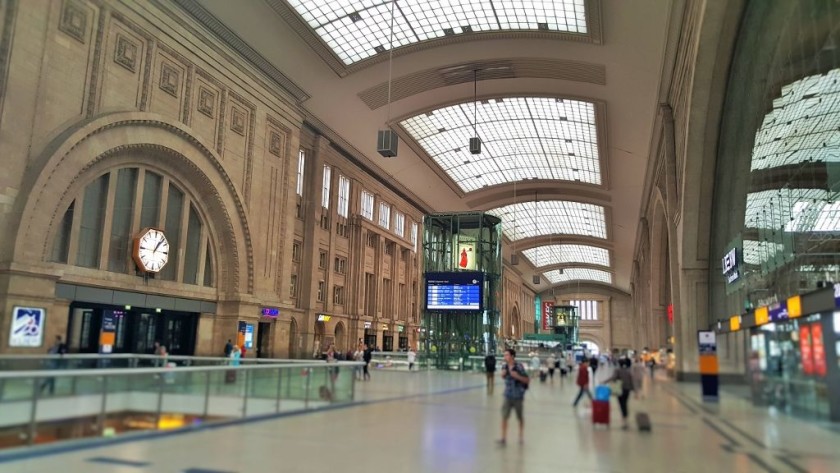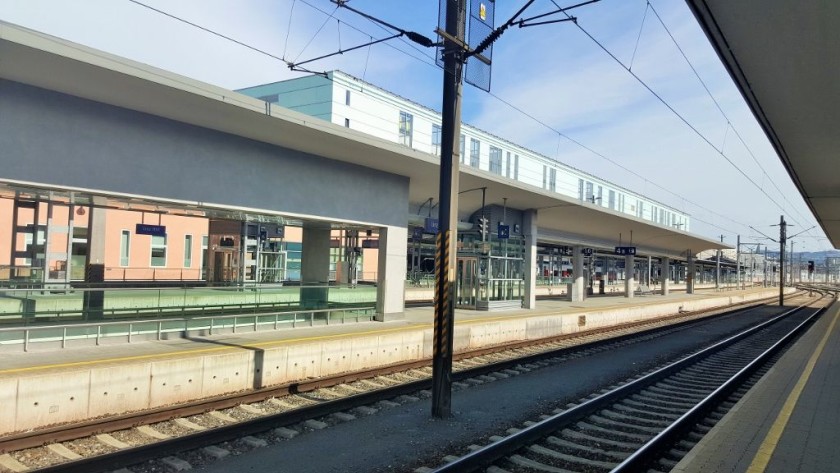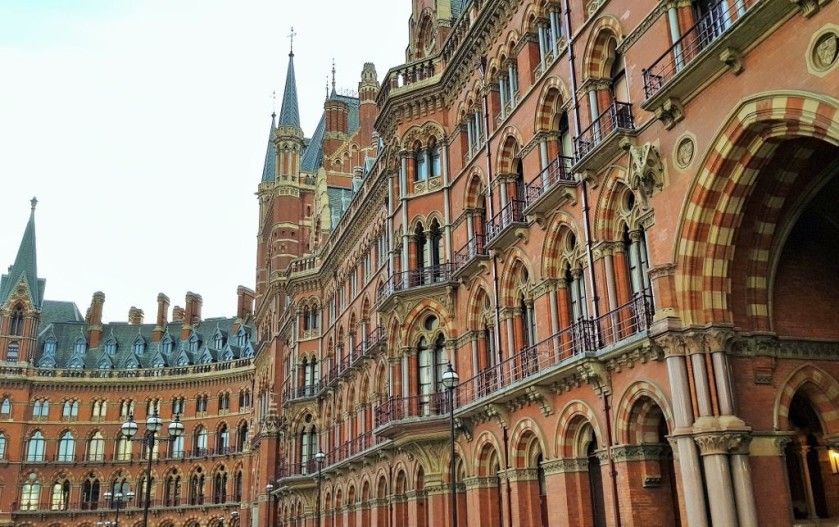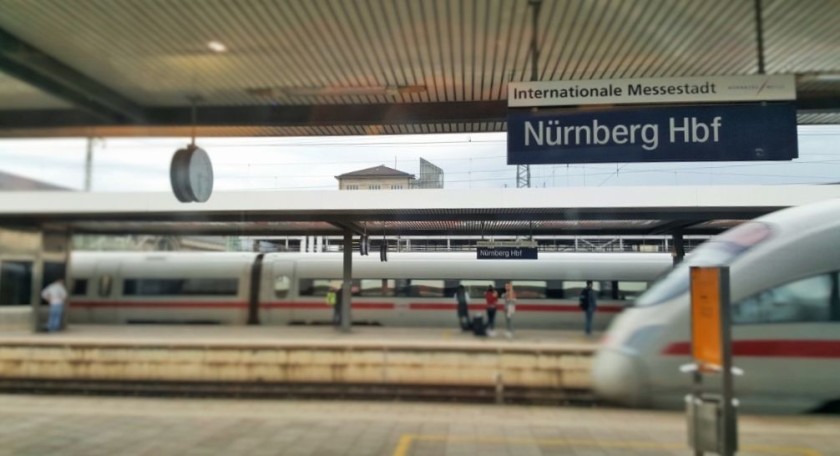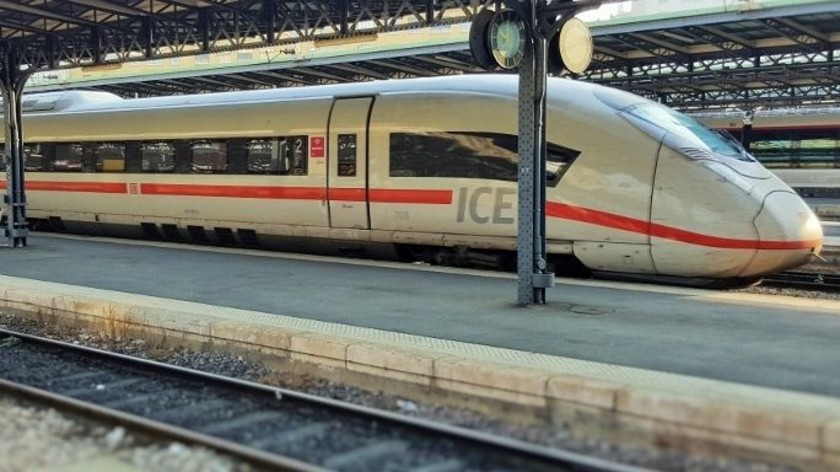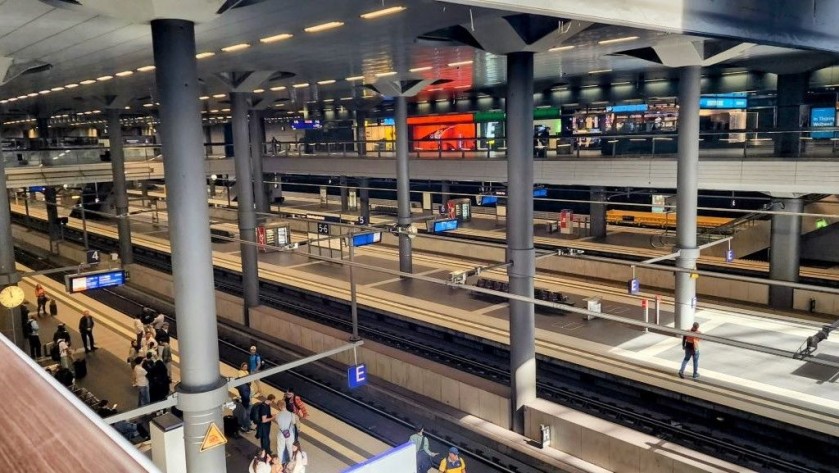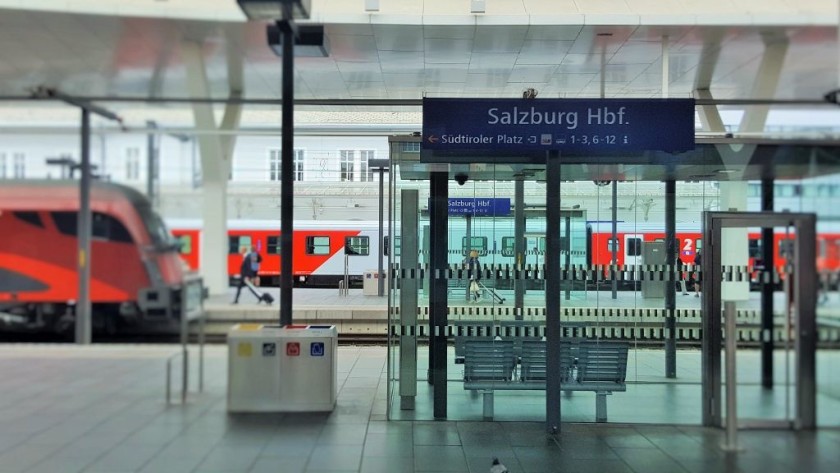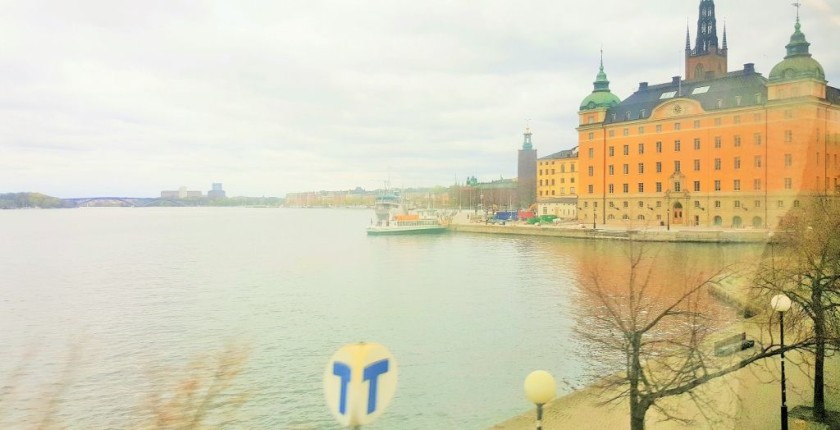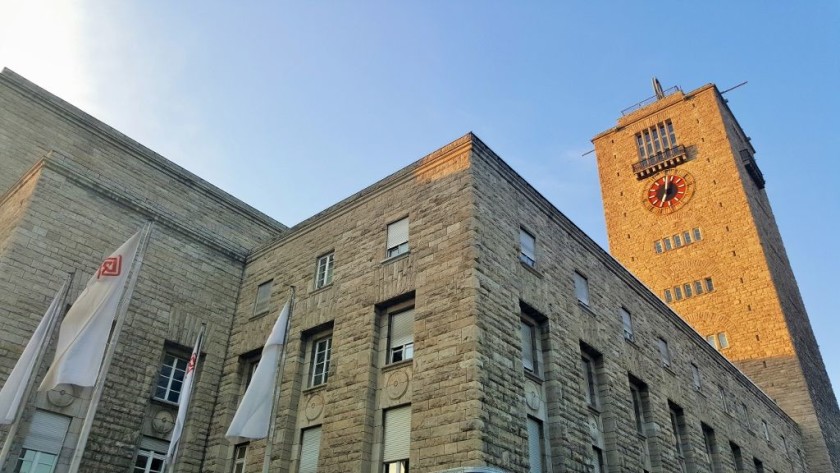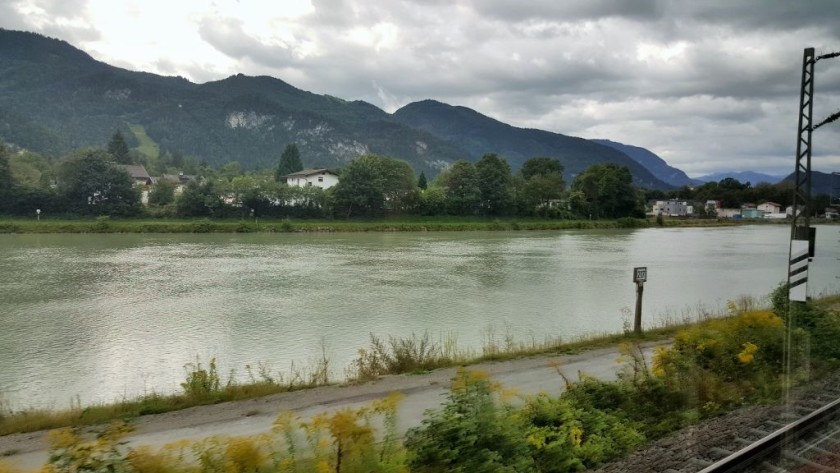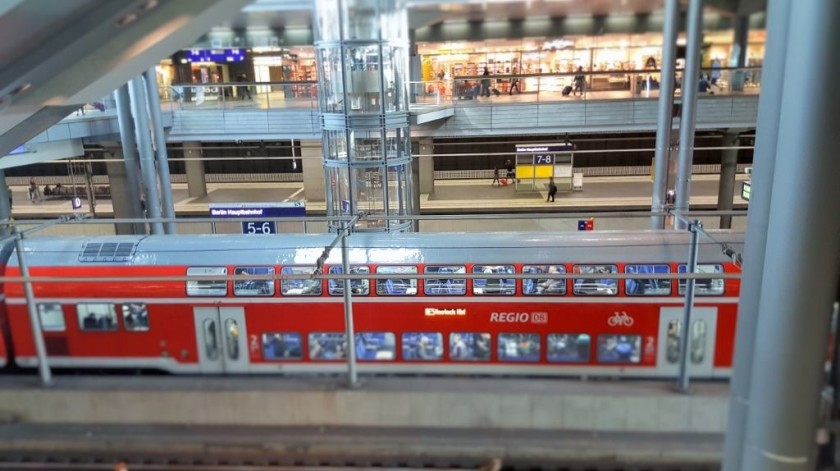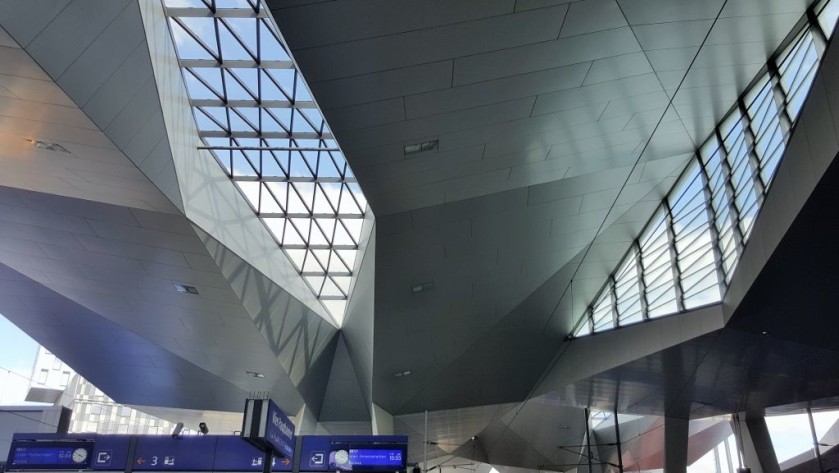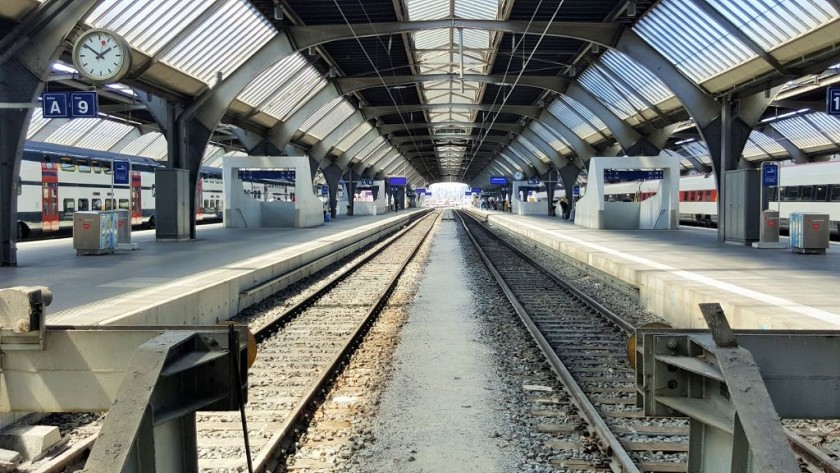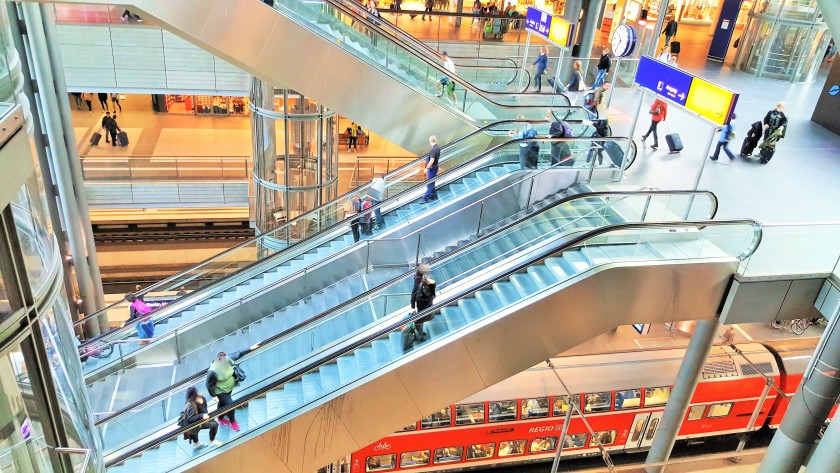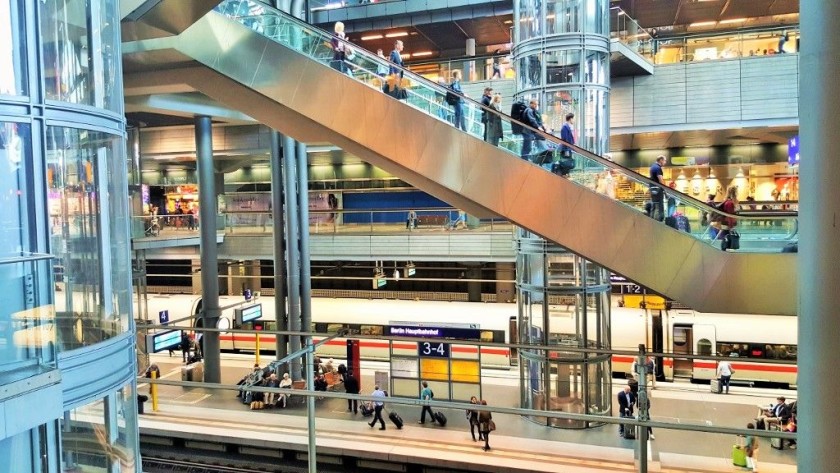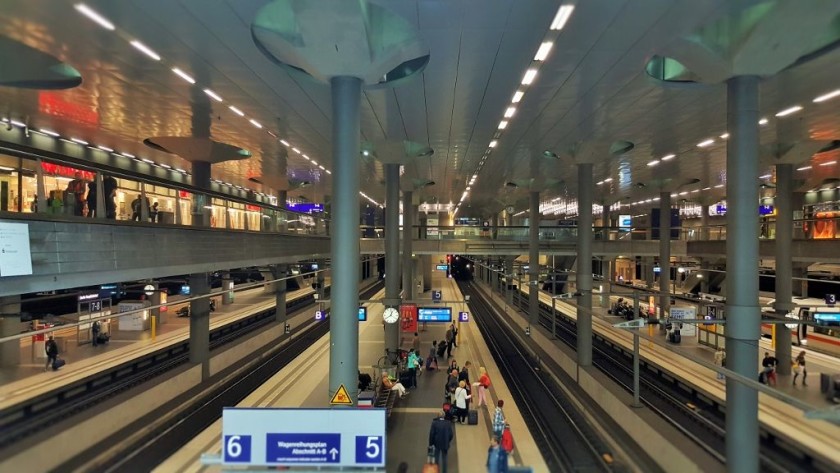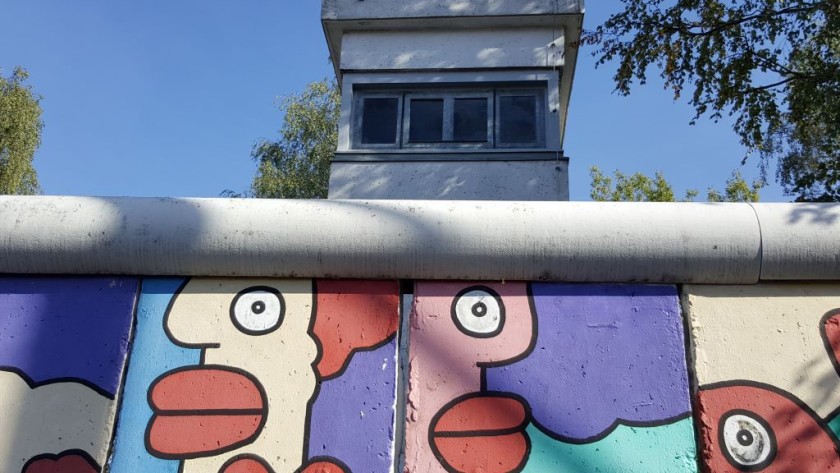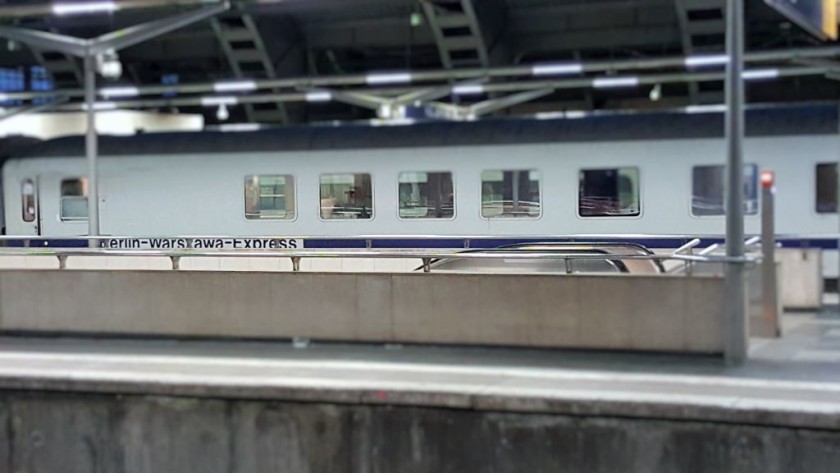Related Content
Content
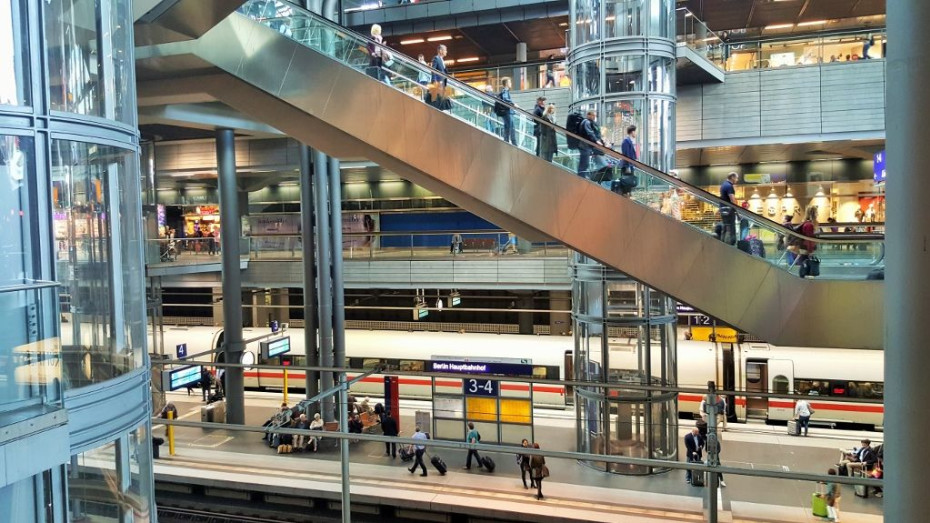
Berlin Hbf (Berlin)
This guide to Berlin's main, central station, its hauptbahnhof, will take you through what to look out for when using the station to depart from or arrive in the German capital by train.
It also explains how to access other areas of the city from Berlin Hbf, how to transfer to and from both the new Brandenburg Airport and Potsdam by train; and suggests convenient places to stay near the station.
Share
At a Glance
Services
Left Luggage
Travel Information Desk
First Class Lounge
Local Tourism Information
Showers
Onward Travel
Metro
Car Hire
Taxi Rank
Accessibility
Step Free
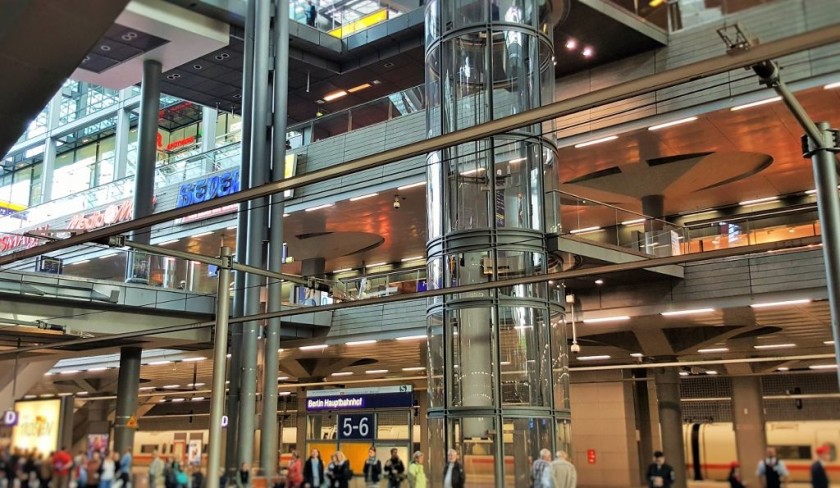

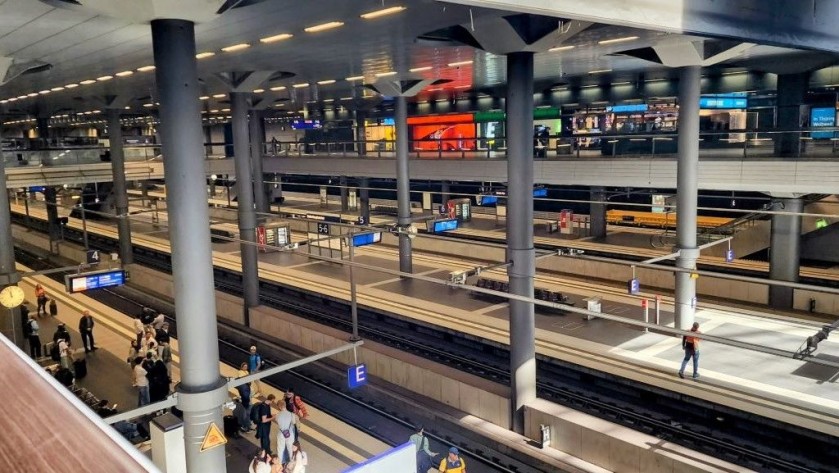
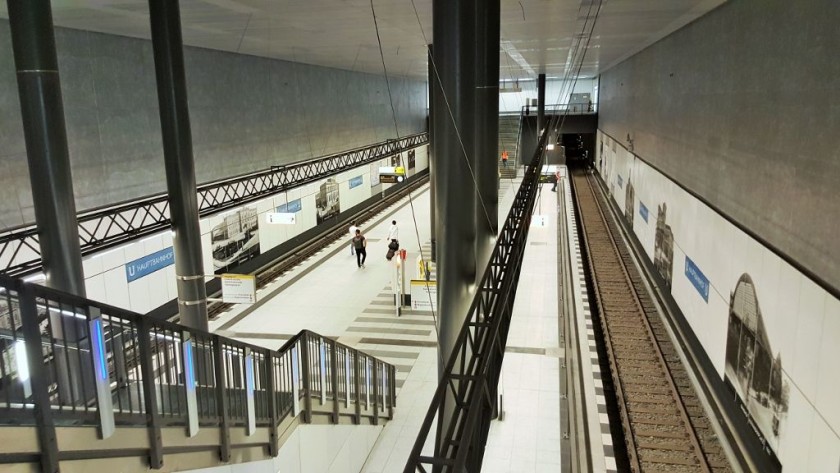
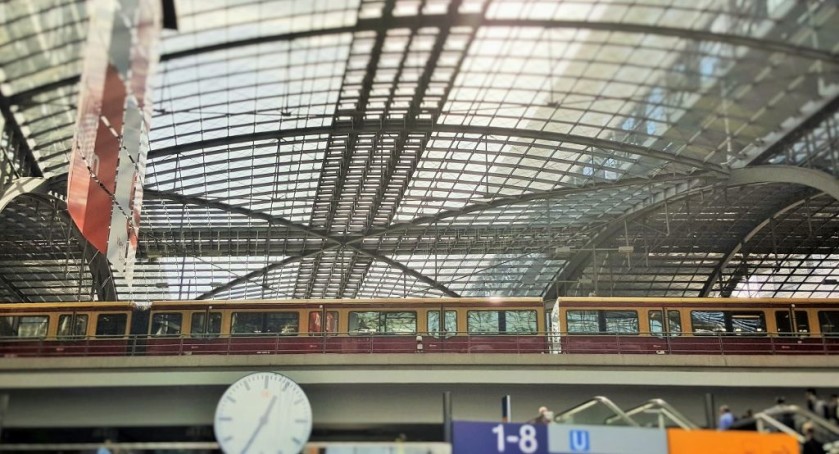
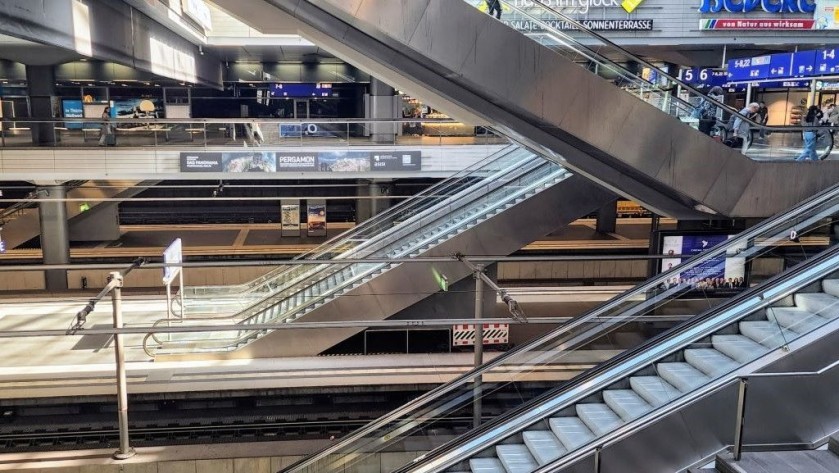
Helpful Links
Train service summary
The usual pattern of direct long-distance train services to and from Berlin is:
- Amsterdam = 1 x IC train every other hour + 1 x European Sleeper train 3 nights per week
- Basel = 1 x ICE train every other hour + 1 x Nightjet train
- Bern and Interlaken = up to 3 x ICE trains per day
- Brussels = 1 x European Sleeper train 3 nights per week
- Budapest = 1 x EC train per day + 1 x Euronight train
- Dresden = 2 x trains every two hours (EC and IC trains)
- Dusseldorf = 1 x ICE train per hour
- Frankfurt (Main), most typical = 2 x ICE trains per hour
- Hannover = 1 x ICE train per hour + 1 x IC train every other hour
- Hamburg = 1 to 3 x ICE or EC trains per hour
- Köln / Cologne = 1 or 2 x ICE trains per hour + 1 x overnight ICE train
- Krakow via Wroclaw and Katowice = 2 x EC trains per day
- Leipzig = 1 x ICE train per hour
- München / Munich - summary = 1 x ICE train per hour + 1 x overnight ICE train
- Nürnberg = 1 x ICE train per hour
- Paris = 1 x ICE train per day = 1 x Nightjet train 3 nights per week
- Praha / Prague = 1 x EC train every other hour
- Stuttgart = 1 x ICE train every other hour
- Warszawa via Poznan = 5 or 6 x trains per day
- Wien / Vienna = 2 x ICE trains + 1 x Railjet train + 1 x Nightjet train + 1 x overnight IC train
- Zurich = 1 x Nightjet train
See the journey guides for more detailed information.
An introduction:
The most casual of glances at a map of Germany, will reveal that Berlin is somewhat tucked away in the north-east corner of the country.
Therefore most other major cities in Germany are some distance from its capital.
But this is not a problem if you want to head to and from Berlin by train, as now there are now, not one, but two high speed rail lines which converge on the city!
So all other major cities in Germany are connected to Berlin by ICE trains, on journeys which take no more than five hours.
If you would like help with planning a train journey to or from Berlin, or want to include the city on a European train travel itinerary, take a look at ShowMeTheJourney's new Concierge Service.
Good to know:
Berlin Hauptbahnhof/Hbf definitely has the wow factor - but it can be easy to be intimidated when using the station for the first time, due to its huge scale.
Five Things Worth knowing about Berlin Hbf:
(1) Some trains depart from gleis (platforms/tracks) above street level, while others use gleis (platforms/tracks) below ground, in what is often referred to as the 'tief' part of the station.
(2) Elevators (aufzugs) and escalators connect the multiple levels in the station, so Berlin Hbf is a step-free station.
(3) Berlin Hbf is located in the geographical centre of the city, but when it was constructed, it was in a sparsely occupied area of Berlin - because the Berlin Wall passed through the area now occupied by the city's central railway station.
Therefore most of the key destinations in the city are some distance away from Berlin Hbf.
(4) The long distance trains to/from the city don't now call at the main station in West Berlin - Zoologischer Garten, or at Alexanderplatz, the station in the heart of East Berlin.
So when heading to West Berlin from the west, the quickest option can be to change trains at Berlin Spandau station.
When heading to Alexanderplatz from the east, change trains at Ostkreuz/Berlin Ost.
(5) Like many other main city centre stations in Germany (the hauptbahnhofs) Berlin Hbf is a shopping mall that trains also happen to depart from and arrive at.
The three levels between the trains house numerous shops, restaurants and food/drink outlets.
So if you're following a holiday itinerary, Berlin Hbf is a very convenient location for picking up additional supplies at the pharmacy or clothing store.
What's where in the station:
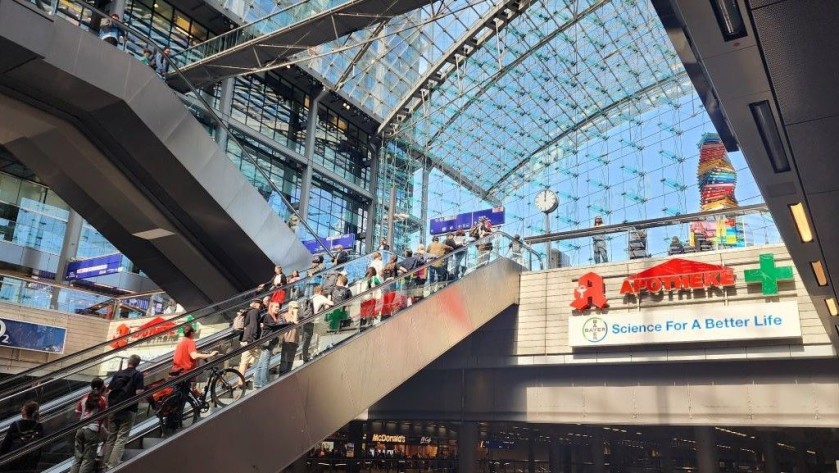
The signposting will help you navigate the station, but this summary of where the key facilities are located should hopefully be useful too:
Berlin's Hauptbahnhof (Berlin's Central Station) is on five levels; from top to bottom they are:
2 Obergeschoss = the location of gleis (platforms/tracks) 11 -16
All of the S-Bahn (local trains) use gleis (platforms/tracks) 15 and 16
1 Obergeschoss = The concourse below (one above street level) is the location of the main ticket desk and reservation office; the Reisezentrum.
The DB 1st class lounges, one of the Information desks at the station and some of the left luggage lockers are also located here.
Erdgeschoss = The street level concourse has exits (ausgangs) at each end - both of which have taxi ranks.
The main departure board at the station is located here, as well as information desks, the car hire desks and the restrooms, - showers are available.
1 Untergeschoss = The concourse below street level is where the entrance to the U-Bahn (Metro) is located.
Other left luggage lockers are also on this concourse.
2 Untergeschoss = The lowest level in the station is the location of gleis (platforms/tracks) 1 - 8.
This part of the station can be referred to as 'Berlin Hbf (tief)'.
Book Accommodation
When planning a trip, finding convenient accommodation can be trickier than working out which train to take.
Hence ShowMeTheJourney has partnered with the innovative accommodation portal, Stay 22, to offer three options for discovering your optimum accommodation:
1: Use the map above to see which hotel rooms and Vrbo rentals, with easy access to Berlin Hbf, are available.
2: Or click on these cherry-picked properties, offered by Stay 22 partner Booking.com, which are by Berlin Hbf and have been selected on the basis of high guest ratings:
Steigenberger Hotel Am Kanzleramt
IntercityHotel Berlin Hauptbahnhof
3: Or see what's available with Stay 22's accommodation partners; which include, Expedia, Hotels.com and Trivago - by clicking the large button below.
Stay 22 will 'shuffle' the booking services so that you can be automatically directed to its partner that currently has the optimum availability at this location.
Questions Answered
ShowMeTheJourney has anticipated what questions are most often asked about taking trains to and from Berlin Hbf and answered them below.
If you can't find the information you are seeking, you can ask a question and the AI enabled service will try to write an answer, telling you what you wish to know.
Is there step-free access to and from the platforms /tracks?
The gleis (platforms / tracks) at Berlin Hbf are both above and below street level, but the station's entire design is centered on how to provide step-free access to / from the trains.
Hence all of the gleis (platforms / tracks) having both escalator and elevator access.
How to travel between Berlin Hbf and the city centre?
When Berlin Hbf was opened it was in a sparsely populated part of the city, in a location partially chosen because of its east meets west symbolism.
A new neighbourhood has formed around the station, but it's likely that your final destination in the city won't be within walking distance of Berlin Hbf.
By local S-Bahn trains
But there is a railway line which runs across the heart of the city, which is used by local S-Bahn trains on lines S5, S7 and S75, which depart from the upper level platforms 15 -16, that link Berlin hbf with to many of the most popular tourist destinations in the city.
(1) Zoologischer Garten station - the main station in West Berlin is at the eastern end of Kurfurstendam - from gleis (platform/track) 16.
(2) Friedrichstrabe station, for the city’s primary shopping area and the Museum Island - from gleis (platform/track) 15.
(3) Alexanderplatz station, the nearest station to the TV Tower - from gleis (platform/track) 15.
(4) For The Olympic Stadium - take a line S5 train or a line S9 train heading to Spandau from gleis (platform/track) 16.
(5) Warschauer StraBe is the nearest station to the East Side Gallery, the longest remaining section of the Berlin Wall - take trains from gleis (platform/track) 15.
Tickets to the city centre rail stations
When booking your rail ticket from a location in Germany on the DB website, it's possible to select these stations served by the S-Bahn trains, as to or from locations.
Or if you travel to or from Berlin with any ticket except Super Sparpreis / Super Saver tickets, the ticket will include a City Ticket, which can be used to hop on the S-Bahn trains.
However, if you have booked to Berlin Hbf, or generally to Berlin, with any other type of ticket, you will need to purchase a ticket for the part of your journey by the S-Bahn trains.
They can be purchased from the ticket machines or in advance online.
Rail passes such as Eurail, Interrail and the D-Ticket can be used for journeys by the S-Bahn trains.
By Metro / Subway (U-Bahn
U-Bahn line U5 now serves Berlin Hbf.
For the area around the Brandenberg Gate take its trains to Brandenburger Tor station and the Museum Island at an aptly named new station.
This line U5 also now links Berlin HBF to Alexanderplatz station in the heart of East Berlin; meaning that taking the U-Bahn is now an alternative to taking the S-Bahn commuter trains from Berlin Hbf to Alexanderplatz.
So an easier option if your train arrives at the lowest level (tief) gleis/platforms and you'll be heading over to Alexanderplatz, is to go up just one level in the station, in order to access the U-Bahn-Metro.
Line U5 now connects at Unter den Linden station, on the main street in East Berlin, with line U6 which goes to Tempelhof.
(Though if you'll be heading to Tempelhof on a train which also calls at Berlin Sudkreuz station, connect there for a one-station hop on a S-Bahn train).
By tram
The easiest access between Berlin Hbf and many areas of East Berlin, is now by tram as Berlin's tram network has been extended to the Hauptbahnhof.
For The Berlin Wall Memorial Museum take lines M8 or M10 to the Nordbahnhof.
How can tickets be purchased for the public transport connections?
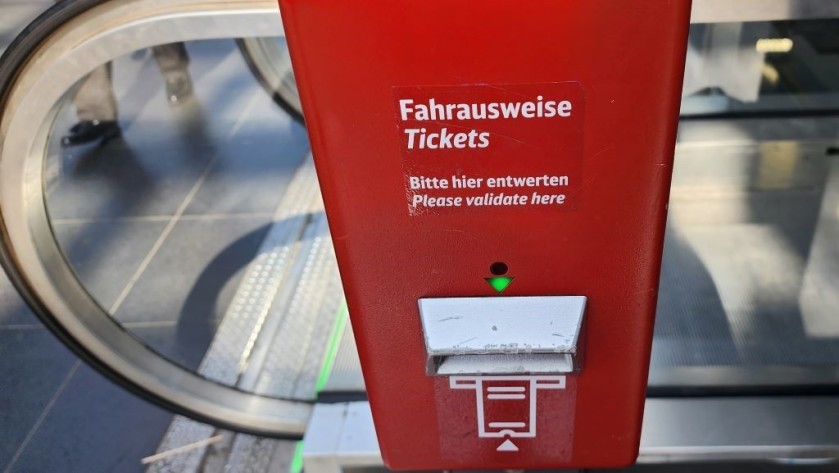
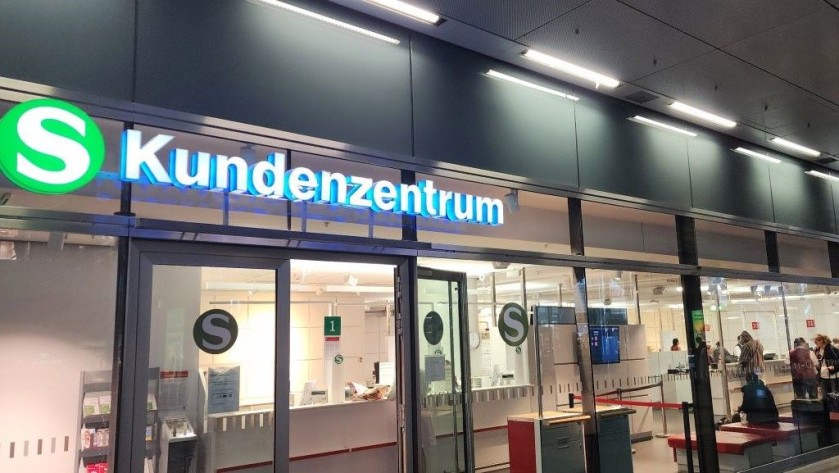
The U-Bahn (metro), trams and buses in Berlin are managed by BVB which offers a range of tickets including 24hr tickets, multi-ride tickets and 7 day tickets.
Though BVB doesn't seemingly offer Touch-And-Go card readers for contactless payments, so tickets need to be purchased pre-boarding.
They can be purchased from:
- ticket machines at the stops and in the stations,
- BVB customer service centres, one of which is on level 1 of Berlin Hbf
- the BVV ticket app
Are there cafes or restaurants available?
There are more than 25 food and drink outlets in Berlin Hbf though aside from a burger bar and a fish and chips restaurant, relatively few of them offer a full meal service.
Is there a First Class lounge?
Yes, there are two first class lounges in Berlin Hbf both which are located on level 1, the Obergeschoss, which is the level between the street level concourse and the upper level gleis (platforms / tracks).
They can be accessed by holders of:
- 1st class tickets at the Flexpreis tariff for travel that day
- 1st class Bahn 1000 cards
and BahnBonus status customers who have a ticket to travel that day.
For full details of who can make use of them, check the guide.
Are there left luggage facilities?
There are left-luggage lockers which can be accessed during the station's opening hours,
They are in two locations on each of the mezzanines, between the street level concourse and the sets of gleis (platforms / tracks).
The lockers are coin-operated, but machines are available which enable 'payment' of coins by bank / credit cards.
Departing By Train:
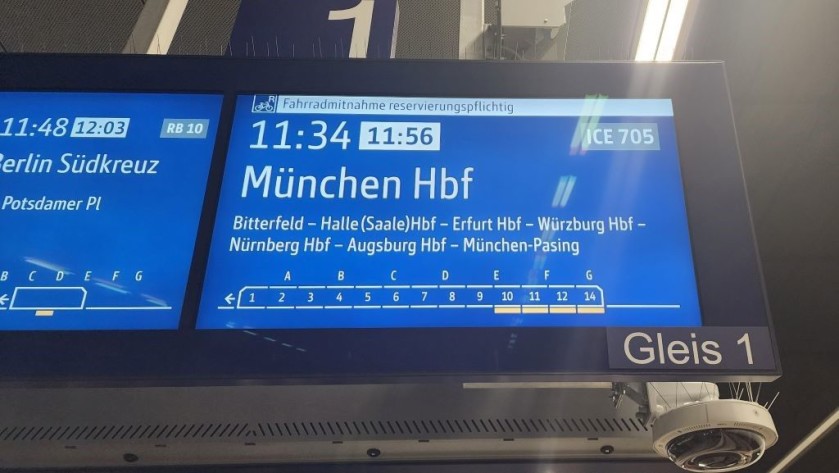
11 Things Which Are Good To Know About Departing From Berlin Hbf by train:
(1) The platforms/tracks/gleis that the trains depart from are located at the very top AND bottom levels of the station.
(2) Long distance trains depart from both of these levels.
The DB online timetable shows the station as 'Berlin Hbf tief' for trains that are departing from the lowest level.
(3) Trains that usually depart from the upper level (gleis 11 - 16) include:
- the IC trains to Amsterdam
- the ICE trains to Köln and Dusseldorf
- the EC trains to Warsaw and Krakow
- the ICE trains to Frankfurt Flughafen/Airport
- the ICE trains to Interlaken/ Basel via Frankfurt (Main)
- the Nightjet train to Budapest and Vienna
- Regio trains on lines RE1, RE2 and RE7 including the fastest trains to Potsdam
- all of the S-Bahn (local) trains.
(4) Trains that usually depart from the lower 'tief' level (gleis 1 - 8) include:
- the ICE/EC/IC trains to Hamburg and Kiel
- the EC trains to Praha and to Budapest
- ICE trains to Frankfurt (Main) via Halle or Leipzig
- ICE trains to Munchen via Nurnberg
- the IC trains to Dresden and Rostock
- ICE trains to Munchen via Stuttgart
- the ICE train to Wien/Vienna
- the new FEX services to Berlin Brandenburg Airport
(5) These platform levels are linked to each other and the street level main concourse by lifts (aufzugs) and escalators.
The lifts on the main concourse directly connect with specific pairs of (gleis) platforms/tracks - so take your time working out which lift you need to take.
(6) However, this is not a station in which to rush for a train – be prepared to use two sets of escalators when accessing and exiting from a platform (gleis).
(7) The majority of trains calling at Berlin hbf are passing through the station, so each gleis/platform has multiple departures per hour.
Your train may not be the next to depart.
(8) Double check that you’re waiting on the correct platform by looking at the poster (the Wagenreihungsplan) - which will list all the departures from each specific platform/gleis.
(9) If you have a reserved seat, you can also use this poster to check in which /zone of the platform you need to wait - for easy access to the coach you will be travelling in.
(10) If you haven’t reserved, the zone information on both the poster and the platform/departure screens, will show you where to wait for easy boarding into 1st and 2nd class.
(As long as the train doesn't arrive back-to-front)
(11) If you haven't reserved it is also a good idea to work which zones the train will be using which will be furthest from the main entrance(s) to each gleis/platform.
Getting away from the crowds will make boarding less stressful and can help maximise your chances of finding spare seats on busy trains.
Arriving By Train:
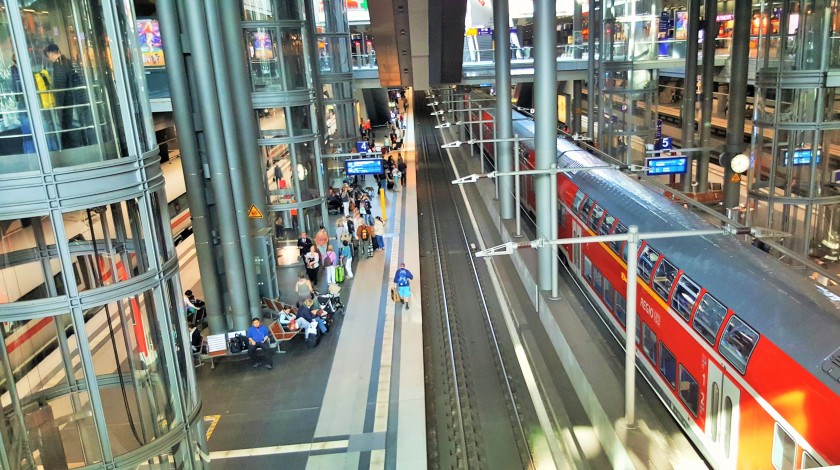
No matter which gleis (platform/track) your train arrives at in Berlin Hbf, you will have to change levels in order to exit the station; when you step off the train, you will either be above OR below street level.
All of the gleis (platforms/tracks) are equipped with escalators and lifts (aufzugs) - there are three lifts on each of the gleis in the lower level of the station.
The lifts are located towards the centre of each gleis (platform/track), so it's likely that you will have to walk passed the escalators to reach them; look out for the tube-like structures.
The lifts are recommended if you have large items of luggage – you will have to use two flights of escalators to exit the station from any gleis (platform/track).
Changing trains:
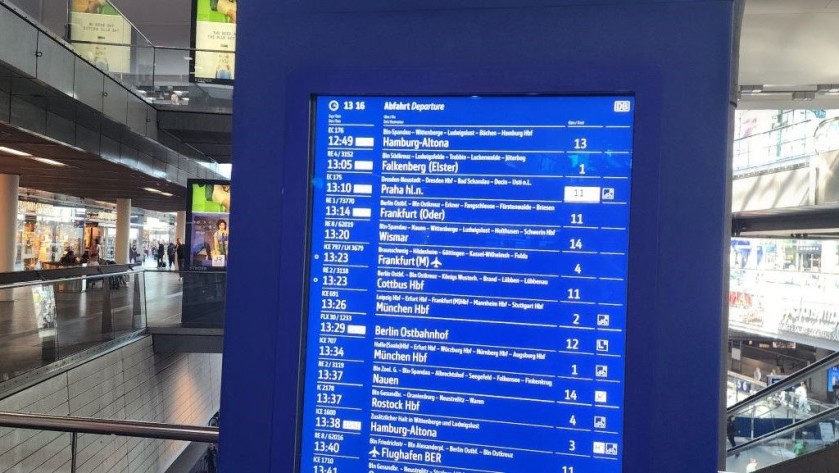
The gleis (platforms/tracks) 1 - 8 and the gleis (platforms/tracks) 11 -16 are five levels apart and many connections involve having to transfer between these levels.
So when planning connections allow a minimum of 10mins to change trains at Berlin Hbf.
On most of the long-distance trains which will arrive at Berlin Hbf, there will be info screens which show the details of the next trains that will be departing.
And it can be a good idea to uses these, or to look up the details of your onward connections on the DB website or app.
Because being aware of where you'll need to head to on arrival at Berlin Hbf, to take your onward train, will make it easier to make the connection.
You definitely want to avoid arriving at gleis 5, then ascending two levels up to check the main departure board, to then only discover you'll need to head back down two levels to take your next train.
As what were the highly useful, but old-fashioned, posters, that listed the details of all departures, have been taken away in this digital age.
They have been replaced by departure summary screens that have been placed in useful locations by the escalators, but they can also be hard to find.
The Other Main Line Stations in Berlin
Virtually all long distance trains to/from Berlin call at other stations in the city in addition to Berlin Hbf.
from Berlin Spandau station
If your final destination is in WEST Berlin and your train to the city is calling at Berlin-Spandau station, before Berlin Hbf - it can be a faster overall journey to change trains at Berlin-Spandau.
Zoologischer Garten (Berlin-Zoo) is the main station in West Berlin, but IC and ICE trains pass through it without calling.
However, frequent Regio and S-Bahn trains (line S5) link Berlin-Spandau with Zoologischer Garten - the Regio trains are 10mins faster than the S-Bahn trains.
from Berlin-Ost station
If your final destination is in the Alexanderplatz, FriedrichstraBe or Hackescher Markt areas, and your train is calling at Berlin Ostbahnhof before Berlin Hbf, - it will be quicker to make the transfer to the S-Bahn at Ostbahnhof/Ostkreuz rather than changing trains at Berlin Hbf
from Berlin-Gesundbrunnen and Berlin-Sudkreuz
If your final destination is in the FriedrichstraBe area and your train is calling at Berlin Gesundbrunnen or Berlin Sudkreuz stations before Berlin Hbf - your quickest and easiest option will be to transfer to a S-Bahn train at either of those other stations.
Central Berlin to Brandenburg Airport by train:
Dedicated 'FEX' Airport Express trains and Regio trains on lines RE7 and RB14 link Berlin Hbf directly with the new main Berlin-Brandenburg Airport; where they all call at the new station which serves Terminals 1 and 2, but not Terminal 5.
Combined the three services provide four trains per hour from Berlin Hbf to Brandenburg Airport and the journey time will be 31 - 34 minutes
However, something to watch out for is that at Berlin Hbf the FEX trains will depart from the lowest level (tief) part of the station, but the trains on routes RE7 and RB14 will depart from the upper level platforms/gleis 11 or 12.
The RE7 trains will be heading to a final destination of Wünsdorf-Waldstadt, but the FEX trains and those on lines RB14 will be terminating at the Brandenburg Terminal 1-2 station.
By Regio train from other central Berlin stations
The trains on routes RE7 and RB 14 also call at other stations in Berlin city centre including Alexanderplatz, FriedrichstraBe and Zoologischer Garten stations.
By S-Bahn train
In addition to these faster RE and RB trains, local S-Bahn trains on route S9 now also link Berlin Hbf and Alexanderplatz, FriedrichstraBe and Zoologischer Garten stations to the new Terminal 1 and 2 station.
They depart every 20 mins from the upper level at Berlin hbf, but the journey time from Berlin Hbf is 51 minutes, as they make additional station calls.
However, unlike the FEX, and RE/RB trains, they DO call at the station linked to Terminal 5 at Brandenburg Airport.
So if your flight is leaving from Terminal 5, taking these line/route S9 trains direct is a quicker option than making connections at the Terminal 1-2 station.
From other stations to Brandenburg Airport:
From Sudkreuz station in Berlin to Brandenburg Airport
S-Bahn line/route S45 also now calls at both the Terminal 5 and Terminal 1 and 2 stations at Brandenburg Airport, so it provides a direct link to the airport from Berlin Sudkreuz station.
So if you'll be heading to the airport from a train which calls at Berlin Sudkreuz before it calls at Berlin Hbf, the quickest and easiest option will be to make a connection to the airport at Sudkreuz station.
From Gesundbrunnen station in Berlin to Brandenburg Airport
Berlin-Gesundbrunnen station is now linked to Brandenburg Airport every 30mins as the new FEX services will call there.
So if you'll be heading to the airport on a train which, before it calls at Berlin Hbf, also calls at Gesundbrunnen, connect there instead of at Berlin Hbf.
By IC train to Berlin Brandenburg Airport
Hourly IC trains now operate now provide a direct link between Brandenburg airport and both Dresden and Rostock.
These IC trains also call at Berlin Hbf as well as Gesundbrunnen and Sudkreuz stations, but the tickets for journeys between central Berlin and Brandenburg Airport will be more expensive than taking the other train services - despite the IC trains not having a faster journey time.
But if you book a train journey to Brandenburg Airport on the DB website which requires making a transfer, the connection could be into these IC trains.
To The Potsdam Palaces By Train from central Berlin
The quickest route between Berlin Hbf and central Potsdam is to take a Regional (Regio) train and not a S-Bahn (local train).
These Regio trains all depart from the upper level platforms at Berlin Hbf and they also call at Alexanderplatz, Freidrichstrasse and Zoologischer Garten stations.
The big plus of taking a Regio train (aside from the fact that they are faster than the S-Bahn trains to Potsdam) is that they also call at call at Potsdam Park Sanssouci station.
That station is adjacent to the palaces in palaces in Potsdam - and the S-Bahn trains don't call at Potsdam Park Sanssouci.
Trains on these lines/routes:
- RB1 (heading to Brandenburg and NOT those heading to Magdeburg) – 1 x train per hour
- RB 22 (trains heading to Konigs Wusterhausen) – 1 x train per hour
- RB 21 (trains heading to Wustermark) – certain hours only
all call at Potsdam Park Sanssouci station.
These trains also call at Potsdam Charlottenhof station, but this station is no nearer to the Charlottenburg Palace than Potsdam Park Sanssouci station.
S-Bahn line S7 also links Berlin Hbf with Potsdam Hbf station in the city centre, but not only are the Regio trains around 10mins faster, the S-Bahn trains terminate at Potsdam Hbf.
The easiest public transport access between Potsdam Hbf sration and the palaces, is to take a Regio train between Potsdam Hbf and Potsdam Park Sanssouci station - hence the Regio trains from Berlin being the best option, if you're heading to the palaces from the city centre.
Our Pick of Guides to Berlin
Now you've arrived in Berlin by train, you'll want to experience the best of the city and the surrounding area.
These travel guides will help you see and expererience the best of Berlin - btw nobody has paid to be on this list, ShowMeTheJourney has simply taken the time to curate a list of relevant and current articles.
Berlin On A Budget (On The Luce)
Berlin on A Budget (The Savvy BackPackers)
Things To Do in Berlin (y Travel)
A recent travel guide from Nomadic Matt
22 TopThings to Do in Berlin (Miss Tourist)
A Top 5 Guide from a Student (Travelling Tom)
Best Things To Do In Berlin (Just One Way Ticket)
73 Cool and Unusual Things To Do in Berlin (Atlas Obscura)
20 Free Things To Do In Berlin (Lonely Planet)
64 Things to Do In Berlin (livelikealocal)
The Best Things To Do at Night (Elite Traveller)
Day Trips By Train From Berlin (The Guardian)
Please support ShowMeTheJourney
This second version of ShowMeTheJourney is exciting and new, so we are genuinely thrilled that you are here and reading this, but we also need your help.
We’re striving not to let anything get in the way of providing the most useful service possible, hence a facility has been set up with DonorBox which can be used to support the running costs and make improvements.
Instead of advertising or paywalls, your financial support will make a positive difference to delivering an enhanced service, as there’s a lot of ideas which we want to make happen.
So if you have found the info provided here to be useful, please go here to say thank you.
Journeys
# Jump to a directionJourneys from Berlin Hbf
Jump to directionsBerlin to Amsterdam by train
Berlin to Basel / Bâle by train
Berlin to Bern by train
Berlin to Bratislava by train
Berlin to Bremen by train
Berlin to Bruxelles / Brussels by train
Berlin to Budapest by train
Berlin to Dessau by train
Berlin to Dresden by train
Berlin to Düsseldorf by train
Berlin to Erfurt by train
Berlin to Frankfurt by train
Berlin to Hamburg by train
Berlin to Hannover by train
Berlin to Heidelberg by train
Berlin to Hildesheim by train
Berlin to Innsbruck by train
Berlin to Interlaken by train
Berlin to Köln / Cologne / Koeln by train
Berlin to Kraków / Krakow / Cracow by train
Berlin to København / Copenhagen by train
Berlin to Leipzig by train
Berlin to Linz by train
Berlin to London by train
Berlin to München / Munich by train
Berlin to Nürnberg / Nuremberg by train
Berlin to Paris by train
Berlin to Potsdam by train
Berlin to Praha / Prague / Prag by train
Berlin to Salzburg by train
Berlin to Stockholm by train
Berlin to Stralsund by train
Berlin to Stuttgart by train
Berlin to Venezia / Venice / Venedig by train
Berlin to Warszawa / Warsaw by train
Berlin to Weimar by train
Berlin to Wien / Vienna by train
Berlin to Zürich / Zurich by train
Journeys to Berlin Hbf
Jump to directionsAmsterdam to Berlin by train
Basel / Bâle to Berlin by train
Bern to Berlin by train
Bruxelles / Brussels to Berlin by train
Budapest to Berlin by train
Frankfurt to Berlin by train
Hamburg to Berlin by train
Innsbruck to Berlin by train
Köln / Cologne / Koeln to Berlin by train
London to Berlin by train
München / Munich to Berlin by train
Paris to Berlin by train
Praha / Prague / Prag to Berlin by train
Stockholm to Berlin by train
Warszawa / Warsaw to Berlin by train
Wien / Vienna to Berlin by train
Zürich / Zurich to Berlin by train
This second version of ShowMeTheJourney is exciting and new, so we are genuinely thrilled that you are here and reading this, but we also need your help.
We’re striving not to let anything get in the way of providing the most useful service possible, hence a facility has been set up with DonorBox which can be used to support the running costs and make improvements.
Instead of advertising or paywalls, your financial support will make a positive difference to delivering an enhanced service, as there’s a lot of ideas which we want to make happen.
So if you have found the info provided here to be useful, please consider saying thank you.

This is one of more than 100 train travel guides available on ShowMeTheJourney, which will make it easier to take the train journeys you want or need to make. As always, all images were captured on trips taken by ShowMeTheJourney.






